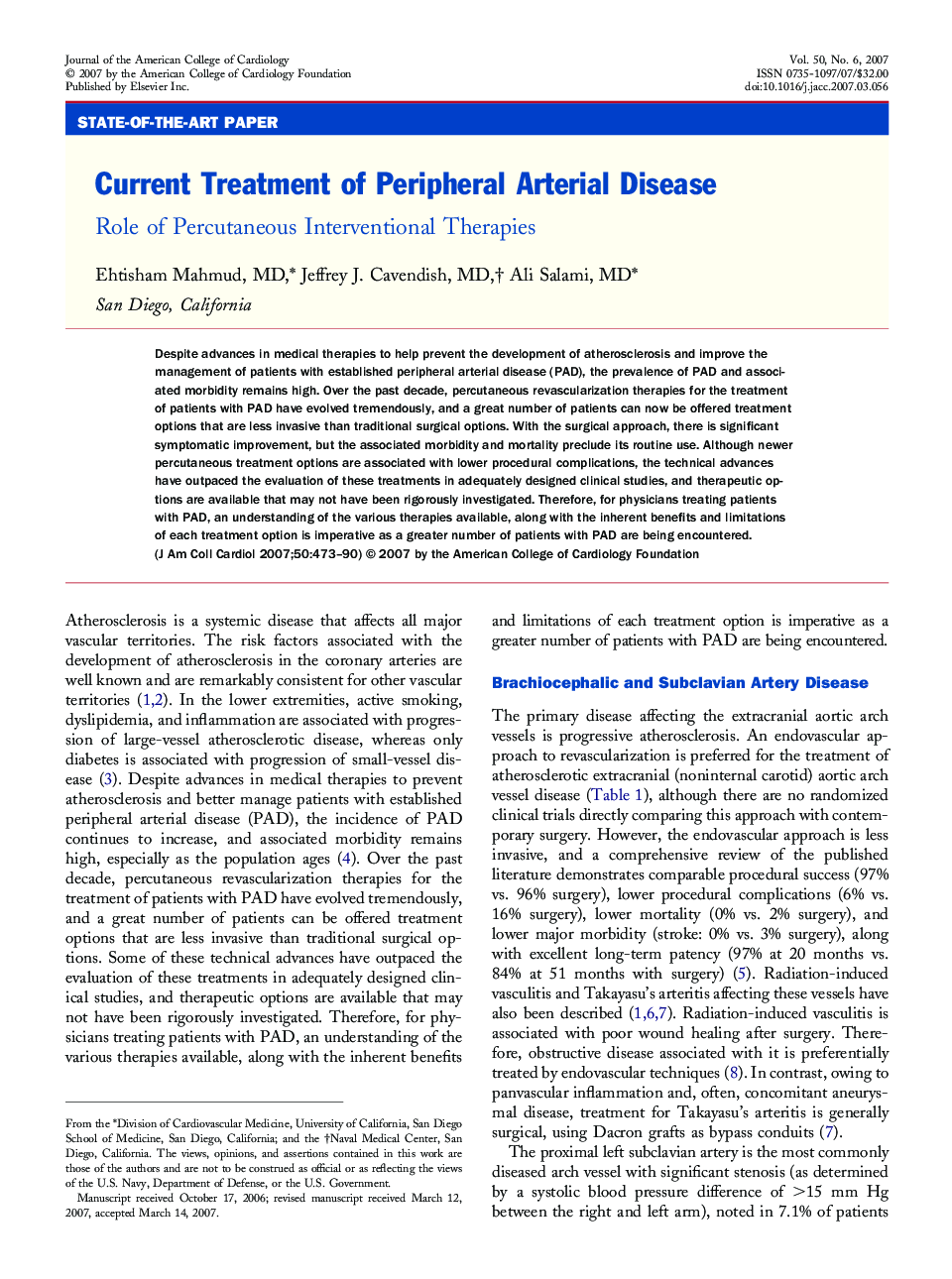| Article ID | Journal | Published Year | Pages | File Type |
|---|---|---|---|---|
| 2953351 | Journal of the American College of Cardiology | 2007 | 18 Pages |
Despite advances in medical therapies to help prevent the development of atherosclerosis and improve the management of patients with established peripheral arterial disease (PAD), the prevalence of PAD and associated morbidity remains high. Over the past decade, percutaneous revascularization therapies for the treatment of patients with PAD have evolved tremendously, and a great number of patients can now be offered treatment options that are less invasive than traditional surgical options. With the surgical approach, there is significant symptomatic improvement, but the associated morbidity and mortality preclude its routine use. Although newer percutaneous treatment options are associated with lower procedural complications, the technical advances have outpaced the evaluation of these treatments in adequately designed clinical studies, and therapeutic options are available that may not have been rigorously investigated. Therefore, for physicians treating patients with PAD, an understanding of the various therapies available, along with the inherent benefits and limitations of each treatment option is imperative as a greater number of patients with PAD are being encountered.
